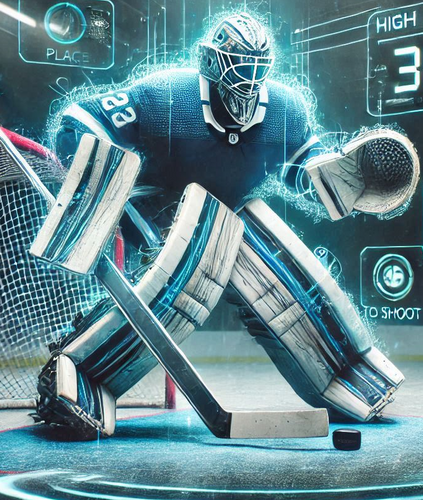Goaltending has changed. The era of the stand-up goalie is behind us. Some of this is simply driven by rational thought about taking away the chance to score in the bottom part of the net. If a goalie gives good scoring targets down there, there is no chance to be bailed out by the shooter shooting too low. Force them to shoot high and things can go wrong for the shooter both left-right and up-down. We can't blame goalies for taking that bargain.
The goalie coaching world has organized around this change as well. I am not up on any of the subtleties of how goaltending is currently coached, but the butterfly has taken over. I have heard of variations on it that help when taking away shallow angles near the goal line emerging in recent decades, but these innovations seem to be expansions on the philosophy behind the butterfly as opposed to a whole new direction.
Regardless, we were well into the early butterfly era when Dominic Hasek hit the scene. His play was effective enough to earn him the nickname, "The Dominator", but, in many ways, it was very unique to him. The goalie coaching world didn't seem to have any way to add any elements of his approach to what they were already teaching. Instead, what was learned is that sometimes players have something that you can't really teach to others and, as a coach, you shouldn't be so rigid that you can't work with that special thing they have.
However, correct me if I am wrong about that if there has indeed been lessons from Dominic Hasek's game that has been incorporated into modern goaltending. I would not be surprised to learn that much of what is taught related to what goalies should try to do when scrambling (when things haven't gone to plan and they just have to come up with something) reflects what he did.
With that said, since many of the plays that he made were deviations from the doctrine at the time, I expect that under many circumstances, a goalie coach would have called them "bad habits". In particular, for an ordinary goalie (one who wasn't getting nearly the results at nearly the level that Dominic Hasek was playing at), I expect that is exactly how they would have been perceived.

Examples of different kinds of "bad" habits
But, for The Dominator, it was his "style".
This discussion about Dominic Hasek serves the purpose of illustrating the existence of cases where what may be described as bad habits are described as style depending on the circumstances. But, it leaves open the question. Was the unique style an advantage?

How would you get over this bar? Fred Fosbury came up with a good answer when he asked himself this question.
Fred Fosbury (creator of the Fosbury Flop which is a method of high jumping that essentially all high jumpers use today) is a classic case where a different style produced a clear advantage. In that case, the very physiology of the body and how it can output behavior that best interacts with physics to get the body over the bar, is best leveraged with his new and different technique.
So, Fred Fosbury didn't have any bad habits. He invented a better habit. That is a different case than what we are considering with Dominic Hasek. It is super complicated to measure how one goaltending behavior vs. other variations would thrive or not when also interacting with the flow of the game and variations in one's own team's play along with the other team's. Fosbury could just say, look, I can get over a higher bar this way than that way. In other cases in sports, we don't have that luxury and that difference opens up the idea that some things that would be called bad habits, may indeed be a type of advantageous style.
And that speaks to what I am getting at here. I think the interesting case is one where a bad habit or some bad habits are actually advantageous. In order to make that case, I will need to clarify two things. First, what precisely do I mean by "bad habit"? Second, under what circumstances could a bad habit under that definition be helpful?
And this is where I'll have to leave the reader on a cliff hanger because those answers are coming in part 2 where we'll put these "bad habits" under a microscope!

Upon close inspection, we can see two bad habits here. While on a date he is (1) lost in his phone and (2) was too busy to take off his lab coat. I don't think either of these qualify as a "style".

